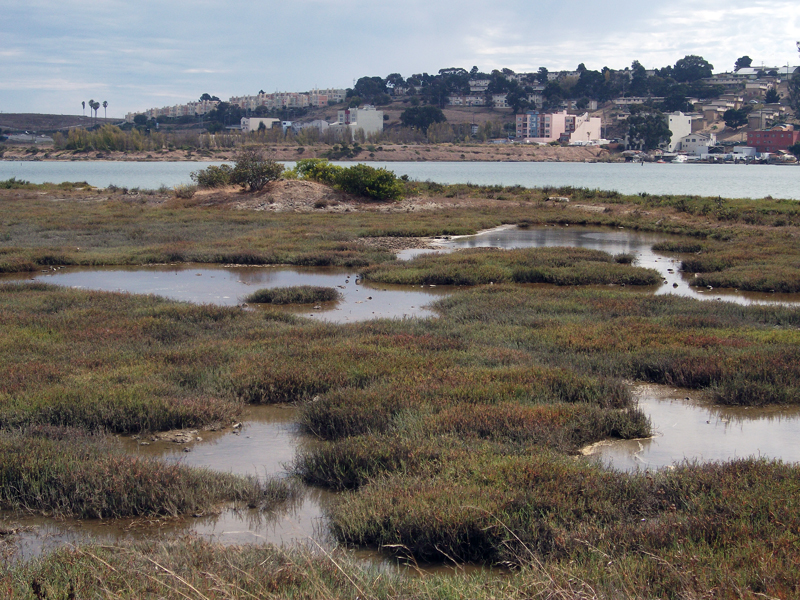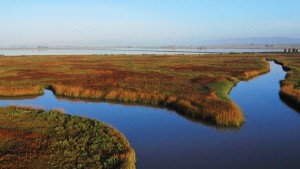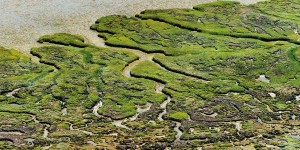In a polluted industrial area in southeast San Francisco, city agencies and naturalists are carving out a series of oases along the San Francisco Bay meant to bring back wildlife and visitors.
With recent sightings of rare birds — along with the reintroduction of a near-extinct plant — birders and biologists say the restoration effort is flourishing. The restored marshy areas near Hunters Point now provide habitat for the California clapper rail and a recovered plant called Suaeda californica.
“I love the paradox: Natural habitat with shorebirds amidst these factories and gravel pits,” said Kimberly Jannarone, a Golden Gate Audubon Society member and habitat restoration volunteer. “I see the plants getting healthier and birds coming in and thinking about nesting here.”
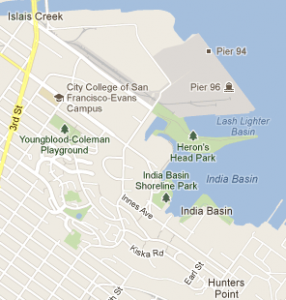
The Blue Greenway Project, a $66 million, long-term undertaking by the Port of San Francisco, San Francisco Parks Alliance and other city agencies, planners, biologists and volunteers, has been underway for about eight years and still has several decades of labor ahead of it.
But workers are now putting the finishing touches on and around Heron’s Head, including a new meadow, fresh pathway, dog run and even a bidirectional track to protect bicyclists from traffic as they cycle through the Blue Greenway area to the park.
To celebrate, the Port is planning a ribbon cutting at Heron’s Head, near Cargo Way and Jennings St., on November 1.
“Out here, for the most part, the wetlands are restored,” he said. “But they need constant monitoring and protection.”
Spotting rare birds
Standing on the new pathway, he waved to Jannarone and fellow birder Richard Drechsler, who took turns gazing at an osprey nest through a telescope from the top of a park hill. They were trying to spot two rare birds other watchers had seen there just the day before: the lesser yellowlegs (a cousin of the more frequently-sighted greater yellow legs), and a lark bunting.
While they had yet to see the lark bunting, Jannarone said the lesser yellowlegs had recently made an appearance.
But what has San Francisco bird enthusiasts really excited these days is a pair of California clapper rails, an endangered species that arrived and successfully nested in Heron’s Head Park about a year-and-a-half ago. Drechsler said he was the one who first spotted them here on July 3, 2010.
“They are shy, secretive birds,” he said. “Usually you find them by surprise.”
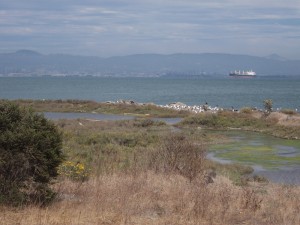
Birders also keep an eye out for American avocets, killdeer, herons and many other birds in the park – so many that the Audubon Society has released a publication called “A Field Guide to 100 Birds of Heron’s Head.”
To the north of Heron’s Head, Pier 94 has five acres of wetlands that also provide important habitat to birds and native plants within the Blue Greenway. This area used to be an unofficial dumping ground along the waterfront before volunteers began removing litter, debris and nonnative plants in 2002, said Noreen Weeden, volunteer coordinator for the Golden Gate Audubon Society.
A balancing act
The trick is to balance public access with protecting wildlife, said Carol Bach, environmental affairs officer for the Port of San Francisco. Despite the fact that Heron’s Head Park and Pier 94 provide only small areas of habitat, she said, they are important ones to migratory birds who use these wetlands as their only stop in San Francisco.
“A lot of people in the neighborhood also have very little access to open space,” Bach said. “There are kids who live in the projects right above and have looked at the bay and the park but have never been to it, touched it or stuck their feet in the water. They don’t have appreciation for the natural environment because they haven’t experienced it.”
That’s one reason the group Literacy for Environmental Justice (LEJ) provides education and restoration work in the area with an Eco center in Heron’s Head and environmental internships for youth from Bayview-Hunters Point.
LEJ has pulled out more than 30,000 pounds of trash at Candlestick Point since 2005 and planted more than 10,000 native plants with youth volunteers between Heron’s Head and Candlestick, according to Patrick Rump, acting executive director and nursery manager. Now there are more than 130 bird species and 100 native plant species between those two areas.
Success stories
The reintroduction of Suaeda californica, a rare green shrub also known as California seablite, represents one of the biggest native plant successes along the city’s southeast waterfront.
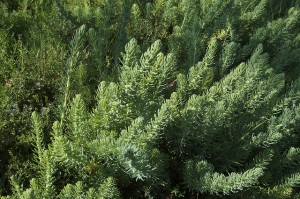
Coastal ecologist Patrick Baye said this near-extinct plant was donated to the area around 1999 and produced many seeds before dying out. The seeds took root in Heron’s Head and, in 2004, were also transplanted to Pier 94, where they remain today.
“It’s been over 10 years and they are hanging on,” said Baye, a former biologist with the U.S. Fish and Wildlife Service focusing on endangered species recovery. “The point is, San Francisco is supporting an endangered species. It’s the only place it’s really hanging on besides Morro Bay.”
The whole area has experienced an influx of native plants and biodiversity within the last several years, said Rump, of LEJ. He’s also helped to restore native plants at Candlestick Point, a part of the Blue Greenway that was recently spared closure by the state park system.
“It’s not out of the woods, yet,” he said of the park and its financial stability.
The closure would have meant reduced access at the southern end of the city, according to Meredith Thomas, director of policy and stewardship at the San Francisco Parks Alliance. This might have slowed the efforts of the Blue Greenway Project, meant to connect spaces along the waterfront– starting at Candlestick Point — to provide biking and hiking paths.
“We want to have a connected trail, so if you live near Candlestick you can bike through to work and then bike back and enjoy some birds,” she said. “We want to have a world class destination of waterfront parks and we’re zooming in on little parts at a time.”
The types of recreation that can be provided along the Blue Greenway are limited because of its location on public trust land, said Beaupre, of the Port. Activities allowed include “passive recreation” such as picnic areas and opportunities for fishing, kayaking, hiking and cycling.
Getting boaters out
He said one goal of the project to improve the area for boaters. Plans are already underway to create more kayak storage near Pier 52 within the next one to three years.
Islais Landing, another space for boaters that was a junkyard 15 years ago, is now a park used and maintained by Kayaks Unlimited. “It was an industrial area that was being abused,” Beaupre said. “We felt like if we could get a user group in here we could start some positive activities.”
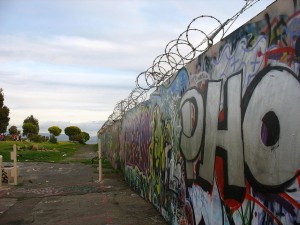
The Port is also working with the San Francisco Arts Commission to beautify nearby former grain silos – now simply an eyesore –by adorning them with a big, bold piece of public art.
Some areas, such as Pier 70, are in the early stages of extensive planning to cater to all its competing interests. The 65-acre site is trying to maintain its shipyard operations while preserving historic buildings that date back to the 1880s.
But certain other places along the waterfront, such as Warm Water Cove Park, aren’t yet a priority of the project. The park, which attracts homeless camps, continues to struggle with limited support to care for its plants and keep the grounds clean.
“There’s been a lifetime of public misuse of the bay front,” said Rump, of LEJ. “So you can expect a lifetime of restoration work.”
Dhyana Levey is a contributor to Bay Nature and a San Francisco-based freelance reporter covering the environment.

